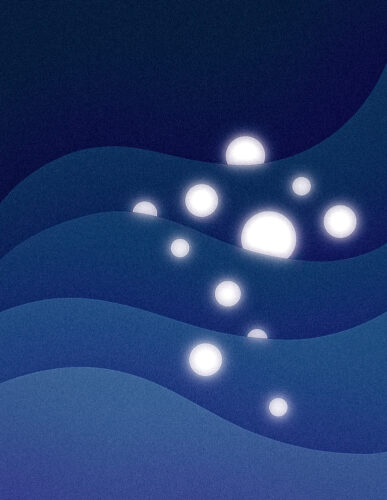Art Courtesy of Sophia Zhao
Wrought into a cycle,
carbon schleps from one stop
to the next. Perhaps I recall it
swept along the atmosphere, or
gathered by the ground.
But in this primordial painting,
lumbering green bacteria
nose for warmth in the ocean,
their cellular frames tousling the tides.
Eventually, they dissolve
like salt, and carbon stretches
down to retire under the sand. And in
this dizzying deepsea, the muddy
seafloor, slumbering beneath
carbon’s gray lines like a shutter
over the dark, unsheathes
the largest passage.
Slate-streaked rocks from the byway
pull open their pores. Quietly,
I watch as carbon rolls out
toward the surface.
Artist’s Statement
I wanted to convey research’s brilliant ability to shift preconceived notions through my poem, “A Carbon Sea Scene,” which offers a window into the findings of Lidya Tarhan, Jiyuan Wang, and their colleagues recently published in Nature. Inspired by their stepwise discovery of an abiotic deep-sea carbon sink, I aimed to depict my own gradual understanding of their research by crafting a metaphoric “painting” representative of their study. To draw out the beauty of the authors’ breakthrough, I relied on a poetic structure that “streche[d] down” the page—much like how the carbon cycle transcends depth—to emphasize the rich information that the deepest waters hold. Phrases such as “tousling the tides” and “seafloor, slumbering” maintain a steady rhythm that crescendos with “pull open their pores”—the most pivotal moment of this poem, and ultimately, the research of Tarhan, Wang, and their colleagues.

